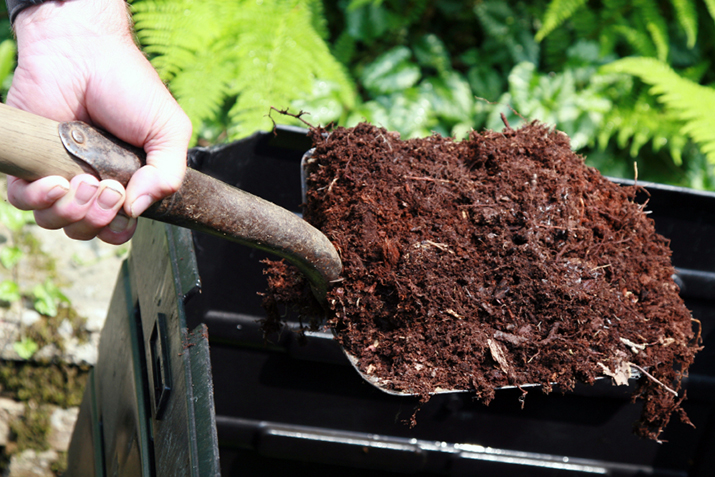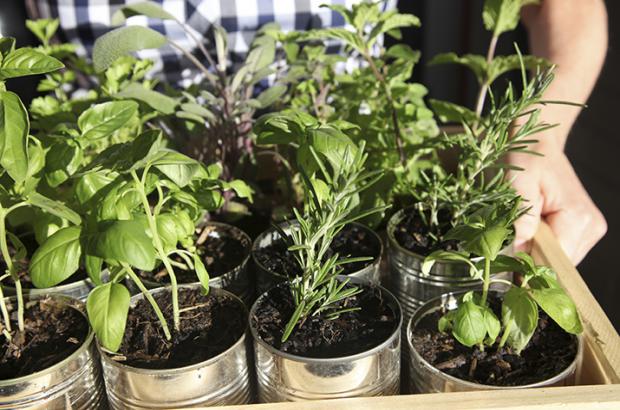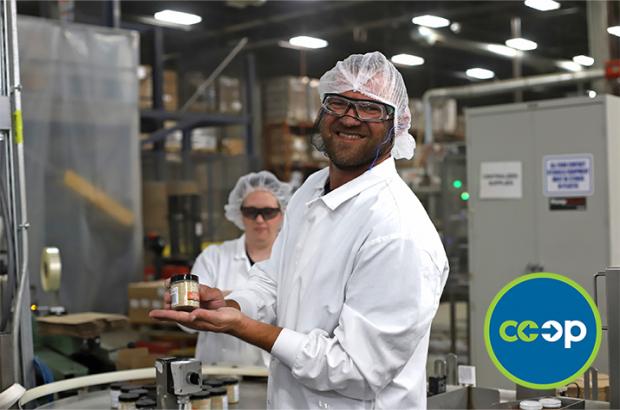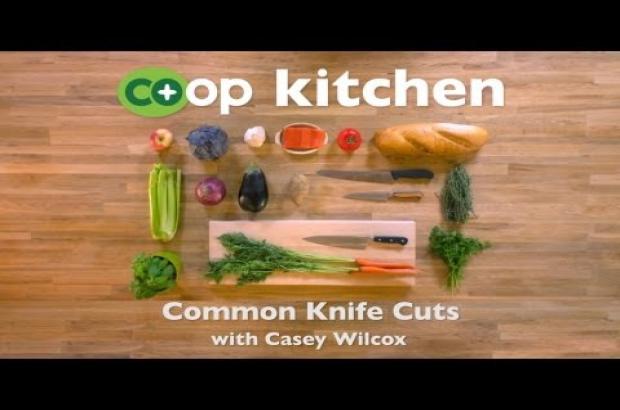Article
Using Organic Fertilizers

Growing food organically is a hot topic across the country. Most of the attention is on avoiding pesticides or using organic and environmentally friendly products to control insects and diseases, but growing organically also means using organic fertilizers.
Why fertilize?
Just like our bodies need nutrients to function and grow, so do plants. The soil contains many of the vital nutrients needed, but as plants use them, the soil can become depleted. Soil also can be depleted through erosion by wind and rain. Fertilizing is a way to replenish the fertility of the soil. The healthier the soil, the healthier the plants will be.
What do plants need? While there are at least 16 nutrient elements necessary for plant growth, the most important are nitrogen, phosphorous, and potassium (referred to by the elemental symbols, N, P, and K). Most soils contain large reserves of the other 13 nutrients that might also hitchhike along when you fertilize with the "big three."
The advantage of organics
The purest form of organic fertilizer is a plant, animal, or mineral that is applied to the garden without any processing. Good examples of these are green manures, animal manures, and wood ashes. The advantage to this form of fertilization is that not only are the main nutrients mentioned above added to the soil, but organic matter and humus are added, as well. Organic matter improves soil structure, moisture retention, drainage, and the microbial life of the soil, and an adequate amount of organic matter in the soil can help ensure that nutrients are available to plants on a steady basis and that the soil structure enhances root growth. Organic fertilizers dole out the nutrients more slowly than chemical fertilizers, so plant roots are less likely to be burned by getting too high a dose.
Even if you use processed organic amendments, such as alfalfa meal, bonemeal, and greensand, you'll still get many of the advantages. Plus, you can take care of the need for a specific nutrient by applying the appropriate fertilizer. For example, if your lettuce needs a shot of nitrogen, alfalfa meal would be a good choice. If you need more phosphorous to help your carrots grow, bonemeal would be a good addition.
Obviously, the best way to use organic fertilizers is to apply a combination of raw materials high in organic matter, such as manure, along with specific organic fertilizers to target crop needs. Another advantage of using raw materials, even leaves and straw, as part of your fertilizer program, is that you get to recycle materials that would otherwise end up in the landfill.
Application basics
Because organic fertilizers take time to break down and make their nutrients available to the soil, it's best to apply them at least a few months before planting, such as in the fall before a spring planting. Applying fertilizers early allows time for soil microbes to digest the organic matter and transform nutrients into a form plants can use. The exception would be liquid organic fertilizers, such as fish emulsion. These have nutrients that are readily available, so they can be applied at planting or during the growing season.
The easiest way to apply organic fertilizers is to spread them on the soil surface or planting beds. Since most plant feeder roots are in the top few inches of the soil, there's no need to dig the nutrients down deeply unless you're applying a phosphorous fertilizer. This nutrient moves very slowly, so the only way to spread it quickly through the root zone is to mix it into the top 6 to 12 inches of soil.
How much fertilizer you should apply will depend on your soil's health. A rough estimate is to apply 2 pounds of actual nitrogen (100 pounds of 10-10-10 contains 10 pounds of "actual" nitrogen) per 1,000 square feet. Apply phosphorous and potassium at about one-tenth this rate, unless a soil test indicates otherwise.
Types of organic fertilizers
Organic fertilizers can be grouped according to the source of their raw material. There are plant-based, animal-based, and mineral-based fertilizers available. Here are some examples of plant- and animal-based products you might use in your garden.
- Plant-Based Fertilizers: Plant-based fertilizers are usually high in nitrogen and sometimes potassium. Some crops are grown specifically to be made into organic fertilizer, while others, such as cottonseed meal, are by-products of another industry.
- Alfalfa Meal: This fertilizer is also available in pellets. It has a moderate amount of nitrogen (2 to 3 percent) and contains some trace minerals.
- Corn Gluten: This by-product of the corn-processing industry contains 10 percent nitrogen in a form that's quick to break down. It also has the unique ability to inhibit germination of seeds and is sold as an organic pre-emergent herbicide to control crabgrass in lawns.
- Cottonseed Meal: This by-product of the cotton industry is made from the remains of cottonseeds after the oil is pressed out. It's a slow-release fertilizer, moderately high in nitrogen (6 percent), with some phosphorous. It can acidify the soil. Since cotton is such a heavily sprayed crop, there are concerns about pesticides on the seed and in the meal. It's best to buy low-residue or pesticide-free cottonseed meal.
- Seaweed: Extracts of seaweed and kelp are found in meal and liquid forms. They are good sources of minerals, with some potassium and nitrogen. They also enhance the microbial activity in the soil. Liquid versions of seaweed can be sprayed directly on plants as a foliar fertilizer.
- Soybean Meal: This high-nitrogen fertilizer (7 percent) is similar to alfalfa meal and contains more nitrogen than cottonseed meal.
- Animal-Based Fertilizers: By-products from the dairy and meat processing industries produce a bevy of organic fertilizer products.
- Blood Meal: This product is exactly what it sounds like: a by-product of the slaughtering industry and is a rich source of nitrogen (14 percent). The smell may attract dogs and wild animals to your garden.
- Bonemeal: Another by-product of the slaughtering industry, bonemeal is a rich source of phosphorous (11 percent) and calcium (22 percent), and it supplies some nitrogen. "Steamed" bonemeal has less nitrogen but somewhat faster nutrient availability than "raw" bonemeal.
- Fish Products: By-products from the fish industry yield organic fertilizer products such as fish emulsion and fish meal. These are high in nitrogen (up to 10 percent) and quickly available to plants.
- Compost: Compost is considered the Cadillac of organic fertilizers. Compost can be made from plant-, animal-, and mineral-based materials. The beauty of making compost is that no matter what material you start with, the end product is relatively similar. Finished compost has a low but good balance of nutrients while being high in organic matter that helps feed the soil's microorganisms. Composts are available commercially, or you can make your own. They can be used along with other fertilizers. Ingredients in commercial composts include various kinds of animal manures and lawn and garden wastes. Making compost is a way to deal with yard waste and make fertilizer simultaneously, and you always know what ingredients go into the finished product.
- Animal Manures: Manures can be derived from a variety of animals and even insects. Most are available bagged, composted, and sometimes sterilized. The nutrient composition of animal manures varies based on the animal, the bedding, and method of manure storage. While it's easy to go to a garden center to pick up a bag of composted manure, if you need larger quantities of manure, you can visit local farms. Aged manure is better than fresh, and cow is better than horse (high in weed seeds), but any manure will give you worthwhile advantages. Cow manure is the manure most commonly found bagged in garden centers. While nutrient content is low, the plants can absorb them moderately quickly. Manure from sea birds, chickens, and bats is rich in nutrients, especially nitrogen.
Highly soluble and quickly available nutrients are useful early in the season to stimulate vegetative growth. However, high-nitrogen chicken manures and guanos can burn tender plant roots. It's best to use them as a foliar feed, diluted in water, or in compost form. Worm castings are similar to compost in their composition, and they are equally easy to produce at home. Because nutrient levels are so low in worm castings, they are considered more of a soil amendment (like compost) than a fertilizer.
For fertilizers that are allowed in USDA Certified Organic production, visit the Organic Materials Review Institute (OMRI) website.
Information courtesy of the National Gardening Association, www.garden.org.













